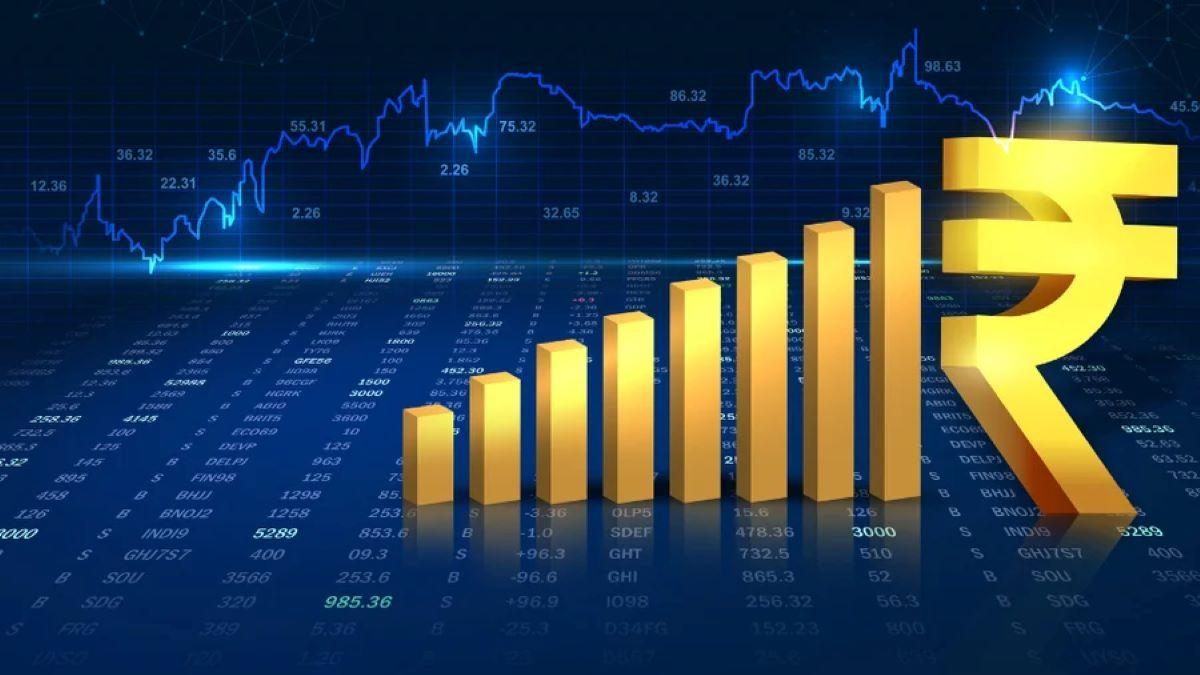If you want to make sense of the stock market in India, it may be a good idea to start with the Sensex. As one of the country's most widely tracked stock market indexes, the Sensex gives you a snapshot of how the economy is performing through the lens of its top 30 companies. By understanding what the Sensex is, you can decode market trends, understand investor sentiment, and assess the financial health of corporate India.
Analysts commonly refer to this benchmark index when discussing market rallies, potential crashes, or the general economic outlook. This is because the Sensex's meaning goes beyond numbers alone. It reflects the market's momentum and accounts for possible macroeconomic shifts.
To grasp why this 30-stock benchmark continues to be a trusted barometer for traders, investors, and institutions alike, you need to understand how the Sensex works, its components, and how it is calculated. In this article, we will discuss all these aspects and more.
What is the Sensex?
The Sensex, short for the Stock Exchange Sensitive Index, is the flagship index of the Bombay Stock Exchange (BSE). It comprises 30 of the biggest and most frequently traded BSE companies selected from across key sectors of the Indian economy. If you’re trying to understand the BSE Sensex, think of it as a real-time indicator of India’s corporate and economic health. It reflects how the top listed companies in the country are performing.
As a market benchmark, the Sensex gives investors a quick sense of the market's general direction. You can track this index to know whether the market is climbing, correcting, or staying flat. The movements of this index typically mirror the shifts in investor sentiment, too.
Additionally, knowing how Sensex works allows you to interpret daily market changes easily and make more informed decisions because the index reacts to broader economic trends. So, whether you are investing for the long term or tracking short-term opportunities, this is a metric to watch.
What is the Relationship Between the BSE and the Sensex?
To fully understand the Sensex, you need to look at its connection to the Bombay Stock Exchange (BSE). The Sensex is the benchmark index of the BSE, meaning it is both created and maintained by this stock exchange. It tracks the performance of 30 financially strong and actively traded companies listed on the exchange, making the Sensex a direct reflection of how the broader BSE market is performing at any given time.
Established in 1986, the Sensex was India’s first stock market index. Its purpose was to provide a consistent and reliable measure of overall market movement on the Bombay Stock Exchange. Since then, the BSE Sensex has become one of the most trusted barometers in India for assessing market trends.
Over the decades, the index has evolved to reflect the dynamic nature of the Indian economy. The meaning of the Sensex has now grown from being just a statistical measure to becoming a symbol of economic growth and corporate performance. Its composition is reviewed periodically to ensure it continues to represent the most influential companies on the BSE.
What are the Components of the Sensex?
The Sensex represents the combined performance of 30 of the most prominent companies listed on the Bombay Stock Exchange. These stocks belong to different key sectors of the Indian economy. To better understand what the Sensex is, you can look at it as a curated benchmark representing the general market performance of India’s corporate leaders. This is why it offers you a quick read on broader economic trends.
The stocks in the Sensex are selected based on various parameters such as:
Market Capitalisation
Companies are primarily selected based on their free-float market capitalisation, which reflects the total market value of shares available for public trading. This ensures that large and influential companies drive the index. The market cap also plays a central role in calculating Sensex.
Liquidity
Stocks must have high liquidity to be included in the Sensex. This parameter is measured by trading volume and frequency. Including liquid stocks ensures that the index only reflects companies that are actively traded and easily bought or sold. Liquidity also helps maintain the relevance of the Sensex's meaning as a broad market index.
Sectoral Representation
The Sensex is constructed to include companies from diverse sectors of the Indian economy. Investors choosing to replicate the Sensex obtain a balanced exposure to different parts of the economy. Thanks to such an inclusive composition, the BSE Sensex is a reliable benchmark that offers a representative view of India’s market structure.
How Does the Sensex Work?
The Sensex calculation is done using the free-float market capitalisation method. This method considers only shares readily available for trading. Shares held by promoters or other stakeholders are not included.
Check out the formula for how the Sensex is calculated using this method:
Sensex = (Free-Float Market Capitalisation of the 30 Companies ÷ Base Market Capitalisation) × Base Value of the Index
This formula can explain how the Sensex works in bullish and bearish markets. The market capitalisation of these companies fluctuates daily based on stock prices. So, when markets turn bullish, the Sensex tends to rise. And in bearish phases, it usually falls. This is because the index reflects the price movements of the top stocks and the real-time investor sentiment in response to such movements.
Let’s now look at what drives these market movements more deeply.
Corporate Earnings
Strong or weak quarterly results from companies directly impact their stock prices and, in turn, the Sensex. Positive earnings often trigger bullish reactions, while poor numbers drag the index down. These fluctuations shape the Sensex's meaning as a reflection of corporate performance.
Government Policies
Reforms, taxation changes, interest rate decisions, and budget announcements can all influence investor behaviour and market direction. Pro-business policies lift sentiment and stocks, while uncertainty or instability may lead to volatility. This relationship helps explain what the BSE Sensex is beyond just numbers.
Global Trends
International trends like the US Fed's interest rate changes, geopolitical tensions, and global recessions can also impact domestic markets. Since Indian companies are part of the global financial ecosystem, the Sensex reacts accordingly to such changes. These global triggers are crucial in interpreting the Sensex.
Investor Sentiment
Emotions like fear and greed play a decisive role in short-term stock market movements. Panic selling or euphoric buying can both distort rational valuations and cause major swings in the Sensex's value. In addition to company fundamentals, these shifts in investor behaviour add more layers to the Sensex's value.
Importance of the Sensex in the Stock Market
The Sensex is not just a number flashing across your screen. When used correctly, it acts as a pulse check on the Indian economy. From gauging investors' general mood to guiding market strategies, it plays a vital role in the financial ecosystem.
Here’s why the Sensex matters to anyone tracking or participating in the stock market:
Indicator of Economic Health
The Sensex serves as a real-time barometer of India’s economic performance. When the index rises steadily, it typically indicates corporate growth, investor optimism, and stable public policies. Sharp declines, on the other hand, may indicate economic distress or uncertainty. Knowing this can deepen your understanding of the Sensex.
Confidence Meter for Investors
Fluctuations in the Sensex reflect changes in investor confidence. A rising Sensex can trigger buying sprees, while a falling index may lead to caution or market exits. These patterns are critical to interpreting the meaning of the Sensex value each day and deciding how market participants respond to ongoing events.
Decision-Making Tool
Traders, mutual fund managers, and institutional investors use the Sensex to make data-driven entry points, exit prices, and portfolio allocation decisions. By understanding how the Sensex works, you can better align your trading and investment strategies with your risk appetite and the prevailing market trends.
Conclusion
This brings us to the end of our guide on the Sensex and its calculation. For investors and traders, the Sensex stands out as a trusted signal in a market full of noise. Whether you’re a beginner or a seasoned investor, understanding how the Sensex works can help you make sense of stock market trends and navigate them smartly.
Frequently Asked Questions (FAQs)
How is the Sensex different from the Nifty?
The Sensex tracks 30 large companies listed on the BSE, while the Nifty follows 50 companies on the NSE. Both are benchmark indices but differ in the number of stocks and the exchanges they represent.
Why does the Sensex fluctuate?
The value of the Sensex changes because of fluctuations in the stock prices of the 30 companies included in it. Corporate earnings, government policies, global events, and investor sentiment influence these movements.
How often is the composition of the Sensex updated?
The composition of the Sensex is reviewed every six months, generally in December and June. Companies may be added or removed based on the eligibility criteria to keep the index relevant.
Can the Sensex be used to predict market performance?
The Sensex reflects current market sentiment and trends. However, it doesn’t guarantee future outcomes. So, while helpful in gauging overall direction, it should be used alongside other indicators and research.
Is investing based on the Sensex a good strategy?
Investing based on the Sensex can be a solid long-term strategy because it includes well-established companies. However, it's essential to diversify and consider your individual goals and risk tolerance before investing.




 Easy & quick
Easy & quick
Leave A Comment?